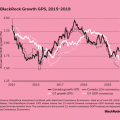The 1983, Eddie Murphy and Dan Aykroyd’s film, “Trading Places”, is a hilarious account of the ups and downs of the commodity futures market. Randolph Duke, Senior Partner of an established commodity brokerage firm, explains to Billy Ray Valentine (Eddie Murphy) just what exactly commodities are and how they are traded:
“Now, what are commodities? Commodities are agricultural products… like coffee that you had for breakfast… wheat, which is used to make bread… pork bellies, which is used to make bacon, which you might find in a ‘bacon and lettuce and tomato’ sandwich. And then there are other commodities, like frozen orange juice… and GOLD. Though, of course, gold doesn’t grow on trees like oranges. Now, some of our clients are speculating that the price of gold will rise in the future. And we have other clients who are speculating that the price of gold will fall. They place their orders with us, and we buy or sell their gold for them.“
Anyone who has seen the movie knows the basic plotline is full of laughs with a feel-good ending. However, we have not found a simpler explanation of what commodities are and how the commodity markets work. The “Trading Places” quote illustrates that commodities are all around us, from the food we eat to the cars we drive, resources are used in the production and functionality in every aspect of our lives. Why does a barrel of oil from Saudi Arabia and Texas cost the same on the global market? Why does a farmer from Iowa use the same unit measurements as a farmer from Brazil?
The modern commodity futures market is one of the most liquid and fast-paced markets in existence. Billions of futures contracts and options are traded every year from all corners of the globe. The CME Group is the world’s largest and most diversified commodity futures exchange. Currently, the CME Group, which includes the Chicago Mercantile Exchange, the Chicago Board of Trade, the New York Mercantile Exchange, and the Commodity Exchange, presides over 90{3da602ca2e5ba97d747a870ebcce8c95d74f6ad8c291505a4dfd45401c18df38} of all United States future contract trades and transactions. As The New York Stock Exchange is to stocks, the CME Group is to commodity futures. In order for one to understand how this massive global market evolved, one must get to the root of its origins. To do so, we must turn back the clock to an unexpected time and place.
Thousands of years ago, in what is now the sands of Iraq, the seeds of mankind’s first true civilization were being sown. Sumer, as this civilization was known, had the first recorded instance of human beings developing a uniform written language, tending year-long agriculture, creating a system of currency, and organizing a system of labor and governance. Clearly, the global commodity futures market we know today can trace some of its origins to this ancient civilization. The ancient man lived and died by subsistence farming and herding. A good harvest not only meant that a farmer could feed his family, but it also gave him the opportunity to sell his surplus crop at the market. Conversely, a bad harvest spelled starvation and near certain death. From this precarious circumstance evolved a concept we can appreciate even in 2012: risk management.
Any trades are educational examples only. They do not include commissions and fees.
Prior to devising a reliable system to manage their risk, farmers and herders relied on the barter system. The barter system was based on non-standard terms and conditions and was the only way to conduct trade and commerce. For example, if Gilgamesh, the farmer, wanted to trade his grain harvest to Shaga, the herder, for cattle, they would need to hammer out the details of this contract themselves. Needless to say, this was a very inefficient and chaotic way to do business. Further, if a biblical flood destroyed Gilgamesh’s crop or barbarian raiders stole Shaga’s livestock, then their assets and livelihoods would be wiped out. Out of this chaotic commerce environment, a revolutionary concept emerged: standardized futures. Sumerians used jugs filled with clay tokens in the shape of the animals or crops they had in their possession. These tokens represented a future promise of delivery, not unlike modern day futures contracts. These tokens could be bought and sold between numerous Sumerians who could either buy the tokens with gold, or trade their own tokens for different tokens. The result was a degree of standardization and an accepted market value, which we now know as the basis for all trading today. Now Gilgamesh and Shaga could trade with themselves and others and know roughly what their assets were worth in terms of others assets. Not only did this make the transaction more straightforward, it also allowed them to put the risk of a transaction into perspective.
Let’s flash forward a few thousand years. The age of exploration has taken Europe by storm. In the 1500’s, food tasted so bad in Europe that simple table staples we know today, such as pepper and salt, were prized and expensive commodities. However, these spices were not found in sufficient quantity in mainland Europe, so sailors and merchants were sent to the far corners of the globe to acquire these much sought after goods. Yet, quite understandably no sailor or merchant traveled for months across the globe battling pirates, diseases, and storms, only to get back to Europe to find that the market price has suddenly dropped dramatically. To offset this uncertainty, merchants and sailors were promised a pre-determined fixed priced for a pre-determined fixed quantity. If, for example, a contract called for 10 ounces of gold for 1 pound of pepper, now the merchant has the peace of mind that his trip will be worth his while and his risk becomes much more manageable and justifiable. Likewise, the sponsor of the spice expedition now has his costs locked in and has the potential to sell his final product at a price above current market value. In short, risk was transferred from one party, who wished to protect themselves, to another party who was willing to assume that risk because they speculated that the future price would move in their favor. So, the next time you look down at your kitchen table and take note of your salt and pepper shakers, remember that the origins of modern day hedgers and speculators trace their existence to them!
The climactic scene of “Trading Places” takes place in the trading floor of what was The World Trade Center. With the help of some inside knowledge and misinformation, Eddie Murphy and Dan Aykroyd’s characters make an amazing trade. The Frozen Concentrated Orange Juice market (FCOJ) opens at $1.02 a unit. As the Dukes begin to buy as many contracts as possible, the prices rise quickly. At roughly $1.42 a unit, Eddie Murphy and Dan Aykroyd begin to short-sell, based on the surreptitious information they have about the abundant supply of oranges. The price drops back to its open, and then the trade floor becomes silent as the Secretary of Agriculture makes the announcement concerning the information that the main characters already know. Prices plummet further, which allows Murphy and Aykroyd to begin to close out at roughly $.46 a unit. The price continues to drop until it closes at $.29 a unit. The result leaves Murphy and Aykroyd’s characters rich, and the Dukes, who had bought high and sold low, bankrupt.
Although the scene depicted in “Trading Places” is a far cry from the days of goat herders and spice traders, the modern futures exchange has evolved over the years into a market where fortunes can be made or lost in mere moments. It is a market where, in theory, anyone from anywhere can trade almost anything. Next time we will look at the evolution of the CME Group, and how what was once a small butter and egg exchange in a backwater city on the shores of Lake Michigan would become the global leader in the commodity market.

